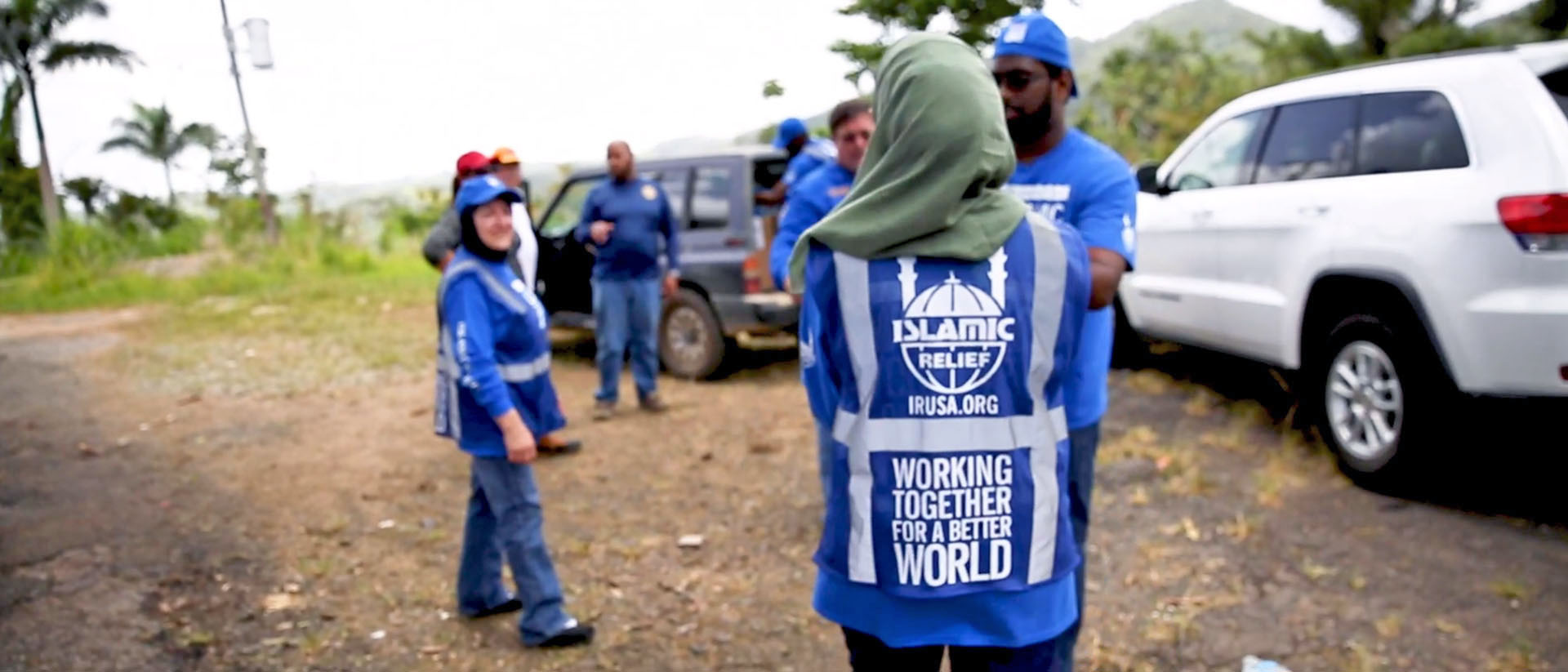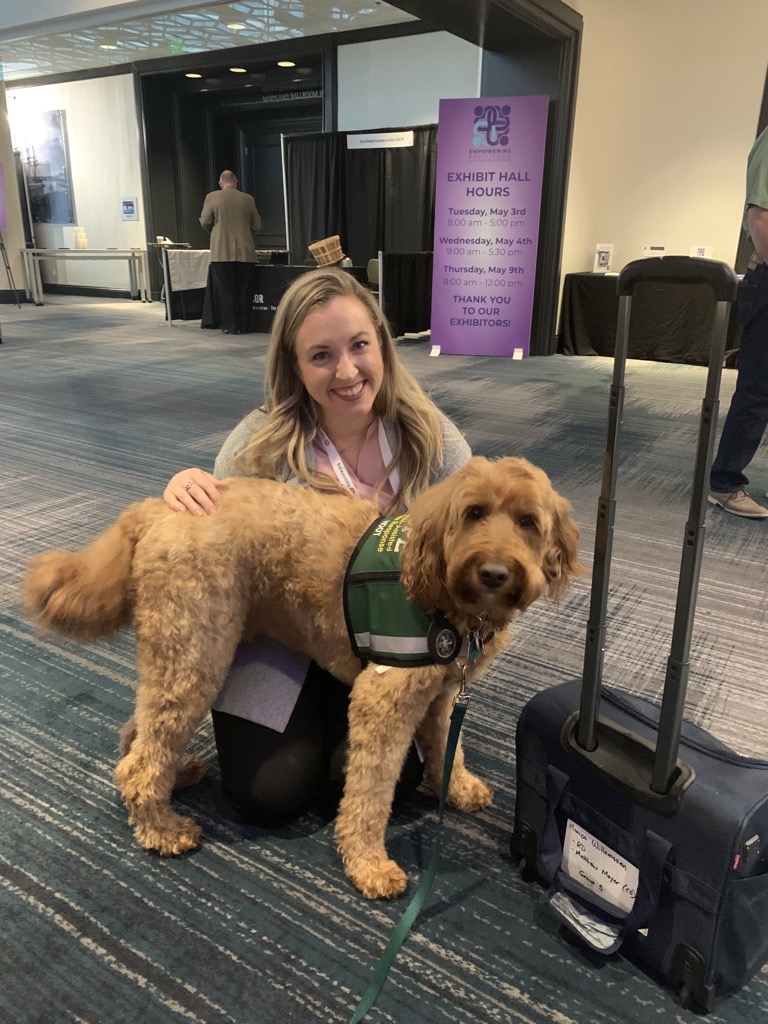
When disasters happen, one of the first groups to jump into action are volunteers and voluntary organizations. These organizations rally to support communities from short-term response efforts to long-term recovery. Voluntary organizations are some of the first to arrive during an emergency and the last to leave, remaining even after federal assistance is exhausted.
Collaboration with these organizations is key to understanding the needs of survivors, avoiding duplication of efforts and maximizing the impact of our combined efforts. FEMA’s Voluntary Agency Liaisons (VALs) are the people that make these connections possible.
VALs cultivate and sustain partnerships at the federal, state, local, tribal and territorial levels to help communities through the disaster cycle. This includes preparedness, mitigation, response and recovery efforts.
Team Rubicon’s Director of Operations Support William Porter knows how vital VALs are from firsthand experience.
“FEMA's VALs are critical links in the coordination process of whole-community response. They help bridge the gap between local, state and federal government entities and community organizations, private businesses and Voluntary Organizations Active in Disaster (VOADs),” said Porter.
Porter recounted a recent experience, where a state had significant interest from a local private business to have their employees volunteer for relief efforts.
“Working in conjunction with the state, a FEMA VAL connected the business with Team Rubicon, which deployed these volunteers alongside Team Rubicon volunteers,” Porter said. “The Team Rubicon volunteers then provided the volunteer group with actionable worksites, tools, personal protective equipment and leadership and ultimately aided in the recovery of disaster survivors in a coordinated and efficient manner.”
From left to right: FEMA Mass Care and Incident Management Assistance Teams representative Kimberly Higgins, Region 8 FEMA Mass Care and Voluntary Agency Liaison April Lipinski, Learning Development Manager at Team Rubicon Jaecob Underwood, JustServe Specialist Katie Moon and State of Colorado representative Lisa Zoeller.
A representative from Mass Care Emergency Assistance, Cindy Atkins, said VAL efforts involve a close cooperation with internal partners within FEMA.
“In Mass Care, our partnership and collaboration with VALs is crucial to providing stability to the recovery process one person at a time,” she said. “Our VAL partners bring resources to the table, whether it is helping someone with furniture so they can move back to their pre-disaster home or connecting them with a local resource to re-build a ramp to provide access to a home, address transportation needs or connect someone with spiritual or emotional support as families impacted by a disaster struggle to recover. The VALs help build the bridge to recovery.”
Over the past few years, the mission of FEMA VALs has greatly expanded. FEMA VALs have assisted with public health and safety or humanitarian needs, such as the COVID-19 Response and Afghan Refugee Resettlement missions. Many times, these assignments fall outside of the work the agency does.
FEMA VAL Miriam Gelo has been involved in this kind of response. “FEMA VALs have been called upon to support other federal agencies where social service and voluntary organization support and coordination is highly needed,” she said. “It’s during these times of crisis, such as the Haiti Earthquake, Deepwater Horizon Oil Spill, Southwest Border Migrant influx, Flint Michigan Water Crisis and the Afghan Refugee Resettlement, where the solid foundation of established mutual trust between VALs and the non-profit community has really been tested and proven.”
The VAL’s “people first” approach in building bridges that connect communities with non-governmental services, serves an integral role in a time of expanding mission sets for agency. The VAL’s expanded mission has and will continue to include working with whole community partners, promoting a unity of effort and adapting solutions to meet shortfalls and unmet needs.
This includes coordination with civil rights organizations to enable services for people with disabilities, legal support and organizations that represent and engage under-represented populations. In addition, VALs coordinate support for major and minor home repair, mitigation efforts and reconstruction, debris removal support services including access to chainsaws and assistance with the muck and gut process for home clean-up.
Other services that VALs support include donation management (i.e., multi-agency warehousing, in-kind donation processing), general social services (i.e., housing assistance, childcare), emotional and spiritual care, and community preparedness.

VAL Monica Willemssen kneels next to Hoot the goldendoodle from HOPE Animal Assisted Crisis Response.
Through the FEMA VALs, we nurture long-lasting steadfast relationships with voluntary, faith-based and community-based organizations, foundations and philanthropic partners who help provide for increasing needs for humanitarian assistance.
Araif Yusuff, director of programs for Islamic Relief USA (IRUSA), speaks fondly about his experience working with VALs to meet the needs of communities, especially underserved communities.
“After the impact of Hurricane Maria on Puerto Rico, a member of the VAL team identified a critical unmet need in a remote community in the municipality of Utuado, which needed a water well,” said Yusuff. “The VALs matched our capabilities to the need and facilitated a connection; not only were we able to provide support for the construction of the well, but we have since built a strong partnership with the local community and have worked with them on other projects over the years after Maria.”
The VAL network is not just made up of personnel in headquarters overseeing general operations or those in the field deployed when disasters happen, it also includes staff permanently stationed in each of FEMA’s 10 regions. This allows for VALs to have a presence throughout the country year-round and to liaise with organizations at a local level even during non-disaster times.
Karla Mongan, a VAL for Region 6, spoke about the rewarding nature of the role.
“There is no better feeling than when you experience the successes that come when the local, state, federal, faith-based, non-profit and community organizations partner together to reach out and offer assistance to those that are unaware of the aid that is available,” she said. “If a family must move away for lack of resources or assistance, it affects the families, children, schools, roads infrastructure and tax base dollars which are viable to the communities in moving forward. Through a unified effort, families can remain in the area that they chose to live in.”
For more information about the work our partners do, visit the Voluntary Organization Information System for Engagement (VOISE) Dashboard. You can also reach out to our VALs by emailing FEMA-VAL@fema.DHS.gov.


